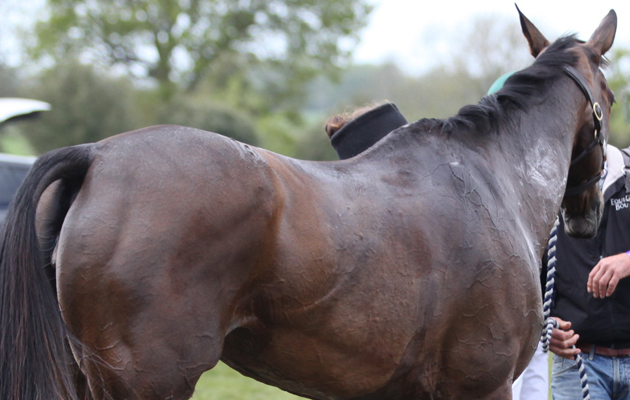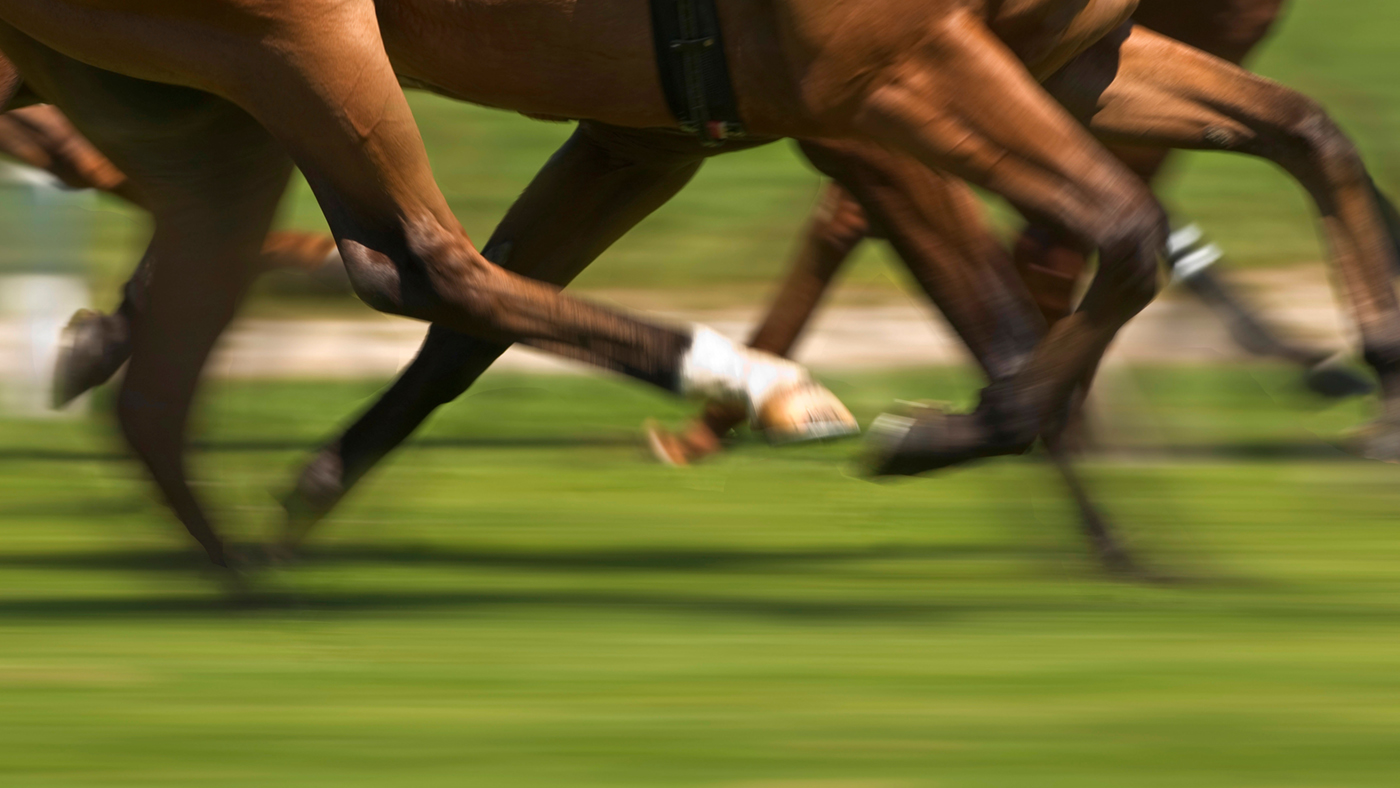What’s involved in rehydrating a sick horse or restoring the body’s natural fluid balance? Karen Coumbe MRCVS explains the importance of fluid therapy
Horses can be surprisingly reluctant to drink when you want them to.
Different methods have been developed to encourage them, from adding apple juice to the bucket or warming the water, to feeding supplementary salt or soaked hay and wet feed to up the water intake. Such tactics can help, but not when a horse is seriously unwell.
The amount of water a healthy horse needs to drink daily will vary, depending on factors including his age, environment, nutritional status, workload and temperament. Certainly, some will only want to drink out of their own buckets containing their usual tap water, in their own stable, so it is worth trying to accustom a horse to change before it is required.
{"content":"PHA+T24gYXZlcmFnZSwgYSBoZWFsdGh5IDUwMGtnIHRob3JvdWdoYnJlZCB3aWxsIGRyaW5rIGFwcHJveGltYXRlbHkgMTIgdG8gNDAgbGl0cmVzIG9mIHdhdGVyIHBlciBkYXkuIFdpdGggb25lIGJpZyBidWNrZXQgaG9sZGluZyAxMCBsaXRyZXMsIHRoYXQgbWVhbnMgYSBsb3Qgb2YgZmx1aWQgdG8gYWRtaW5pc3RlciB0byBhbnkgc2ljayBob3JzZSB3aG8gaXMgdW5hYmxlIHRvIGRyaW5rIOKAkyBlc3BlY2lhbGx5IGlmIGhlIGlzIGxvc2luZyBhZGRpdGlvbmFsIGZsdWlkcyBmcm9tIGJsZWVkaW5nLCBmb3IgZXhhbXBsZSwgb3IgZGlhcnJob2VhLjwvcD4KPHA+Rmx1aWQgdGhlcmFweSBjYW4gYmUgbGlmZS1zYXZpbmcgZm9yIHRoZSBzaWNrIGhvcnNlIGFuZCBpcyBjcnVjaWFsIGZvciB0cmVhdGluZyBjb25kaXRpb25zIHN1Y2ggYXMgZGVoeWRyYXRpb24sIHNob2NrIGFuZCBzZXJpb3VzIGluZmxhbW1hdG9yeSByZXNwb25zZXMuPC9wPgo8cD48ZGl2IGNsYXNzPSJhZC1jb250YWluZXIgYWQtY29udGFpbmVyLS1tb2JpbGUiPjxkaXYgaWQ9InBvc3QtaW5saW5lLTIiIGNsYXNzPSJpcGMtYWR2ZXJ0Ij48L2Rpdj48L2Rpdj48c2VjdGlvbiBpZD0iZW1iZWRfY29kZS0zMSIgY2xhc3M9ImhpZGRlbi1tZCBoaWRkZW4tbGcgcy1jb250YWluZXIgc3RpY2t5LWFuY2hvciBoaWRlLXdpZGdldC10aXRsZSB3aWRnZXRfZW1iZWRfY29kZSBwcmVtaXVtX2lubGluZV8yIj48c2VjdGlvbiBjbGFzcz0icy1jb250YWluZXIgbGlzdGluZy0tc2luZ2xlIGxpc3RpbmctLXNpbmdsZS1zaGFyZXRocm91Z2ggaW1hZ2UtYXNwZWN0LWxhbmRzY2FwZSBkZWZhdWx0IHNoYXJldGhyb3VnaC1hZCBzaGFyZXRocm91Z2gtYWQtaGlkZGVuIj4NCiAgPGRpdiBjbGFzcz0icy1jb250YWluZXJfX2lubmVyIj4NCiAgICA8dWw+DQogICAgICA8bGkgaWQ9Im5hdGl2ZS1jb250ZW50LW1vYmlsZSIgY2xhc3M9Imxpc3RpbmctaXRlbSI+DQogICAgICA8L2xpPg0KICAgIDwvdWw+DQogIDwvZGl2Pg0KPC9zZWN0aW9uPjwvc2VjdGlvbj48L3A+CjxwPkluIG1hbnkgY29saWMgY2FzZXMsIGludHJhdmVub3VzIGZsdWlkcyBhcmUgZXNzZW50aWFsIGR1cmluZyBzdXJnZXJ5IOKAkyBvciBzb21ldGltZXMgaW5zdGVhZCBvZiBzdXJnZXJ5IOKAkyBhcyB3ZWxsIGFzIHBvc3Qtb3BlcmF0aXZlbHkuIEZsdWlkcyBoZWxwIHRvIHN1cHBvcnQgYSBob3JzZSBzdWZmZXJpbmcgZnJvbSBwb3N0LW9wZXJhdGl2ZSBpbGV1cyAocmVkdWNlZCBvciBhYnNlbnQgZ3V0IG1vdGlsaXR5KSwgd2hpY2ggaXMgYW4gdW5mb3J0dW5hdGUgY29tcGxpY2F0aW9uIG9mIHNvbWUgY29saWMgc3VyZ2VyeSBjYXNlcy48L3A+CjxwPklmIHRoZSBpbnRlc3RpbmVzIGFyZSBub3QgZnVuY3Rpb25pbmcgcHJvcGVybHksIHF1YW50aXRpZXMgb2YgZmx1aWQgY2FuIHBvb2wgaW4gdGhlIHN0b21hY2ggYW5kIGVsc2V3aGVyZS4gU2luY2UgaG9yc2VzIGNhbm5vdCB2b21pdCwgdGhpcyByZXN1bHRzIGluIHRoZSBjaGFsbGVuZ2Ugb2YgbmFzb2dhc3RyaWMgcmVmbHV4IGFuZCB0aGUgbmVlZCB0byBwYXNzIGEgbmFzb2dhc3RyaWMgKHN0b21hY2gpIHR1YmUgdG8gZGVjb21wcmVzcyB0aGUgc3RvbWFjaCBhbmQgcmVtb3ZlIHRyYXBwZWQgZmx1aWQuPC9wPgo8aDM+Q2F0aGV0ZXIgb3IgdHViZT88L2gzPgo8cD48aW1nIGZldGNocHJpb3JpdHk9ImhpZ2giIGRlY29kaW5nPSJhc3luYyIgY2xhc3M9Imxhenlsb2FkIGJsdXItdXAgYWxpZ25ub25lIHNpemUtZnVsbCB3cC1pbWFnZS03NDA5ODUiIGRhdGEtcHJvY2Vzc2VkIHNyYz0iaHR0cHM6Ly9rZXlhc3NldHMudGltZWluY3VrLm5ldC9pbnNwaXJld3AvbGl2ZS93cC1jb250ZW50L3VwbG9hZHMvc2l0ZXMvMTQvMjAxNy8wMy9uZXctaGgtcGxhY2Vob2xkZXItMjAweDIwMC5wbmciIGRhdGEtc3JjPSJodHRwczovL2tleWFzc2V0cy50aW1laW5jdWsubmV0L2luc3BpcmV3cC9saXZlL3dwLWNvbnRlbnQvdXBsb2Fkcy9zaXRlcy8xNC8yMDIxLzAzL2luc2VydGluZ19pbnRyYXZlbm91X2NhdGhldGVyX1RJLUFSQ0hJVkUuanBnIiBhbHQ9IkZpdHRpbmcgYSBjYXRoZXRlciIgd2lkdGg9IjE0MDAiIGhlaWdodD0iNzg4IiBkYXRhLXNpemVzPSJhdXRvIiBkYXRhLXNyY3NldD0iaHR0cHM6Ly9rZXlhc3NldHMudGltZWluY3VrLm5ldC9pbnNwaXJld3AvbGl2ZS93cC1jb250ZW50L3VwbG9hZHMvc2l0ZXMvMTQvMjAyMS8wMy9pbnNlcnRpbmdfaW50cmF2ZW5vdV9jYXRoZXRlcl9USS1BUkNISVZFLmpwZyAxNDAwdywgaHR0cHM6Ly9rZXlhc3NldHMudGltZWluY3VrLm5ldC9pbnNwaXJld3AvbGl2ZS93cC1jb250ZW50L3VwbG9hZHMvc2l0ZXMvMTQvMjAyMS8wMy9pbnNlcnRpbmdfaW50cmF2ZW5vdV9jYXRoZXRlcl9USS1BUkNISVZFLTMwMHgxNjkuanBnIDMwMHcsIGh0dHBzOi8va2V5YXNzZXRzLnRpbWVpbmN1ay5uZXQvaW5zcGlyZXdwL2xpdmUvd3AtY29udGVudC91cGxvYWRzL3NpdGVzLzE0LzIwMjEvMDMvaW5zZXJ0aW5nX2ludHJhdmVub3VfY2F0aGV0ZXJfVEktQVJDSElWRS02MzB4MzU1LmpwZyA2MzB3LCBodHRwczovL2tleWFzc2V0cy50aW1laW5jdWsubmV0L2luc3BpcmV3cC9saXZlL3dwLWNvbnRlbnQvdXBsb2Fkcy9zaXRlcy8xNC8yMDIxLzAzL2luc2VydGluZ19pbnRyYXZlbm91X2NhdGhldGVyX1RJLUFSQ0hJVkUtMTM1eDc2LmpwZyAxMzV3LCBodHRwczovL2tleWFzc2V0cy50aW1laW5jdWsubmV0L2luc3BpcmV3cC9saXZlL3dwLWNvbnRlbnQvdXBsb2Fkcy9zaXRlcy8xNC8yMDIxLzAzL2luc2VydGluZ19pbnRyYXZlbm91X2NhdGhldGVyX1RJLUFSQ0hJVkUtMzIweDE4MC5qcGcgMzIwdywgaHR0cHM6Ly9rZXlhc3NldHMudGltZWluY3VrLm5ldC9pbnNwaXJld3AvbGl2ZS93cC1jb250ZW50L3VwbG9hZHMvc2l0ZXMvMTQvMjAyMS8wMy9pbnNlcnRpbmdfaW50cmF2ZW5vdV9jYXRoZXRlcl9USS1BUkNISVZFLTYyMHgzNDkuanBnIDYyMHcsIGh0dHBzOi8va2V5YXNzZXRzLnRpbWVpbmN1ay5uZXQvaW5zcGlyZXdwL2xpdmUvd3AtY29udGVudC91cGxvYWRzL3NpdGVzLzE0LzIwMjEvMDMvaW5zZXJ0aW5nX2ludHJhdmVub3VfY2F0aGV0ZXJfVEktQVJDSElWRS05MjB4NTE4LmpwZyA5MjB3LCBodHRwczovL2tleWFzc2V0cy50aW1laW5jdWsubmV0L2luc3BpcmV3cC9saXZlL3dwLWNvbnRlbnQvdXBsb2Fkcy9zaXRlcy8xNC8yMDIxLzAzL2luc2VydGluZ19pbnRyYXZlbm91X2NhdGhldGVyX1RJLUFSQ0hJVkUtMTIyMHg2ODcuanBnIDEyMjB3IiBzaXplcz0iKG1heC13aWR0aDogMTQwMHB4KSAxMDB2dywgMTQwMHB4IiAvPjwvcD4KPGRpdiBjbGFzcz0iYWQtY29udGFpbmVyIGFkLWNvbnRhaW5lci0tbW9iaWxlIj48ZGl2IGlkPSJwb3N0LWlubGluZS0zIiBjbGFzcz0iaXBjLWFkdmVydCI+PC9kaXY+PC9kaXY+CjxwPkludHJhdmVub3VzIChJVikgZmx1aWRzIHdvcmsgYnkgcmFwaWRseSBib29zdGluZyB0aGUgY2lyY3VsYXRvcnkgc3lzdGVtIHZvbHVtZSwgaG9wZWZ1bGx5IGhlbHBpbmcgcmVjb3ZlcnkuIERpZmZlcmVudCBmbHVpZHMgb3B0aW9ucyBhcmUgYXZhaWxhYmxlLCBpbmNsdWRpbmcgd2hvbGUgYmxvb2QsIHBsYXNtYSBhbmQgdmFyaW91cyB0eXBlcyBvZiBzYWxpbmUuPC9wPgo8cD5BIHZldCB3aWxsIGFkbWluaXN0ZXIgSVYgZmx1aWRzIHRvIGEgaG9yc2UgdmlhIGFuIElWIGNhdGhldGVyLCB3aGljaCBpcyB0eXBpY2FsbHkgaW5zZXJ0ZWQgaW50byB0aGUganVndWxhciB2ZWluIG9uIHRoZSBuZWNrLiBDb21wbGljYXRpb25zIGNhbiBhcmlzZSwgaW5jbHVkaW5nIHZlbm91cyBpbmp1cnkgd2l0aCB0aHJvbWJvc2lzIG9yIGluZmVjdGlvbiwgY2F1c2luZyBhIGJsb2NrYWdlLiBUaGlzIGlzIG1vcmUgbGlrZWx5IHRvIGhhcHBlbiBpZiBhIHNoYXJwLWVuZGVkIGh5cG9kZXJtaWMgbmVlZGxlIGlzIHVzZWQgdG8gYWNjZXNzIHRoZSB2ZWluLiBJdCBpcyBiZXR0ZXIgdG8gdXNlIGEgcHVycG9zZS1kZXNpZ25lZCBjYXRoZXRlci48L3A+CjxkaXYgY2xhc3M9ImFkLWNvbnRhaW5lciBhZC1jb250YWluZXItLW1vYmlsZSI+PGRpdiBpZD0icG9zdC1pbmxpbmUtNCIgY2xhc3M9ImlwYy1hZHZlcnQiPjwvZGl2PjwvZGl2Pgo8cD5UaGVyZSBpcyBhbHNvIGEgcmlzayB0aGF0IGFpciBjYW4gZW50ZXIgYW5kIGNhdXNlIGFuIGVtYm9saXNtIG9yIGJsb2NrYWdlIGVsc2V3aGVyZSBpbiB0aGUgaG9yc2XigJlzIGNpcmN1bGF0aW9uLiBNb3JlIGxpa2VseSBpcyB0aGF0IHRoZSBjYXRoZXRlciB3aWxsIGNvbWUgbG9vc2UgYW5kIHNsaXAgb3V0IG9mIHRoZSB2ZWluLCByZXN1bHRpbmcgaW4gZmx1aWQgbGVha2FnZSBhbmQgYmxlZWRpbmcuIEl0IGlzIGVzc2VudGlhbCB0aGF0IHRoZSBob3JzZSBpcyBjYXJlZnVsbHkgbW9uaXRvcmVkLjwvcD4KPHA+SW4gc29tZSBjYXNlcywgaXQgaXMgc2ltcGxlciB0byBhZG1pbmlzdGVyIGZsdWlkcyBieSB0aGUgZW50ZXJhbCAob3JhbCkgcm91dGUuIFRoaXMgcmVtb3ZlcyB0aGUgbmVlZCBmb3Igc3RlcmlsZSBmbHVpZHMgYW5kIGNhdGhldGVycywgY2FycmllcyBhIGxvdyByaXNrIG9mIGluZmVjdGlvbiBhbmQgY29zdHMgbGVzcy48L3A+CjxkaXYgY2xhc3M9ImFkLWNvbnRhaW5lciBhZC1jb250YWluZXItLW1vYmlsZSI+PGRpdiBpZD0icG9zdC1pbmxpbmUtNSIgY2xhc3M9ImlwYy1hZHZlcnQiPjwvZGl2PjwvZGl2Pgo8cD5JbiB2ZXJ5IHNpY2sgcGF0aWVudHMsIGhvd2V2ZXIsIGJsb29kIGlzIGRpdmVydGVkIGF3YXkgZnJvbSB0aGUgZ2FzdHJvaW50ZXN0aW5hbCB0cmFjdCB0byB0aGUgdml0YWwgb3JnYW5zLCBsaW1pdGluZyB0aGUgYWJzb3JwdGlvbiBvZiBmbHVpZHMgYnkgdGhpcyByb3V0ZS4gU2VyaW91cyBjb2xpYyBjYXNlcyB3aWxsIG5vdCB0b2xlcmF0ZSBmbHVpZHMgYnkgbW91dGgsIGFuZCBuYXNvZ2FzdHJpYyBpbnR1YmF0aW9uIGlzIG5vdCBpZGVhbCBmb3IgcmVjdW1iZW50IGhvcnNlcy48L3A+CjxwPlRoZXJlIGFyZSBhbHNvIHBvdGVudGlhbCBjb21wbGljYXRpb25zIHdpdGggdGhpcyBtZXRob2QsIGluY2x1ZGluZyB0aGUgcmFyZSBjaGFuY2UgdGhhdDxiciAvPgphIHN0b21hY2ggdHViZSBtYXkgYmUgbWlzZGlyZWN0ZWQgc28gdGhhdCBmbHVpZHMgZW50ZXIgdGhlIGx1bmdzLiBBIG1vcmUgY29tbW9uIHByb2JsZW0gaXMgdGhhdCBwYXNzaW5nIGEgc3RvbWFjaCB0dWJlIGNhdXNlcyBhIG5vc2VibGVlZC48L3A+CjxwPlRoZSBnZW5lcmFsIHJ1bGUgaXMgdGhhdCwgaWRlYWxseSwgYSBob3JzZSBzaG91bGQgZHJpbmsgd2F0ZXIgb2YgaGlzIG93biBhY2NvcmQuIElmIGhlIHdpbGwgbm90LCBmbHVpZHMgYnkgc3RvbWFjaCB0dWJlIGFyZSB0aGUgbmV4dCBiZXN0IGNob2ljZSwgaW4gbW9zdCBjYXNlcywgYmVmb3JlIElWIGZsdWlkcyBhcmUgY29uc2lkZXJlZC48L3A+CjxoMz5MaXF1aWQgYXNzZXRzPC9oMz4KPHA+PGltZyBkZWNvZGluZz0iYXN5bmMiIGNsYXNzPSJsYXp5bG9hZCBibHVyLXVwIGFsaWdubm9uZSBzaXplLWZ1bGwgd3AtaW1hZ2UtNzQxMDA0IiBkYXRhLXByb2Nlc3NlZCBzcmM9Imh0dHBzOi8va2V5YXNzZXRzLnRpbWVpbmN1ay5uZXQvaW5zcGlyZXdwL2xpdmUvd3AtY29udGVudC91cGxvYWRzL3NpdGVzLzE0LzIwMTcvMDMvbmV3LWhoLXBsYWNlaG9sZGVyLTIwMHgyMDAucG5nIiBkYXRhLXNyYz0iaHR0cHM6Ly9rZXlhc3NldHMudGltZWluY3VrLm5ldC9pbnNwaXJld3AvbGl2ZS93cC1jb250ZW50L3VwbG9hZHMvc2l0ZXMvMTQvMjAyMS8wMy9EU0MyNDU2X1RJLUFSQ0hJVkUuanBnIiBhbHQ9IkRyaXAiIHdpZHRoPSIxNDAwIiBoZWlnaHQ9Ijc4OCIgZGF0YS1zaXplcz0iYXV0byIgZGF0YS1zcmNzZXQ9Imh0dHBzOi8va2V5YXNzZXRzLnRpbWVpbmN1ay5uZXQvaW5zcGlyZXdwL2xpdmUvd3AtY29udGVudC91cGxvYWRzL3NpdGVzLzE0LzIwMjEvMDMvRFNDMjQ1Nl9USS1BUkNISVZFLmpwZyAxNDAwdywgaHR0cHM6Ly9rZXlhc3NldHMudGltZWluY3VrLm5ldC9pbnNwaXJld3AvbGl2ZS93cC1jb250ZW50L3VwbG9hZHMvc2l0ZXMvMTQvMjAyMS8wMy9EU0MyNDU2X1RJLUFSQ0hJVkUtMzAweDE2OS5qcGcgMzAwdywgaHR0cHM6Ly9rZXlhc3NldHMudGltZWluY3VrLm5ldC9pbnNwaXJld3AvbGl2ZS93cC1jb250ZW50L3VwbG9hZHMvc2l0ZXMvMTQvMjAyMS8wMy9EU0MyNDU2X1RJLUFSQ0hJVkUtNjMweDM1NS5qcGcgNjMwdywgaHR0cHM6Ly9rZXlhc3NldHMudGltZWluY3VrLm5ldC9pbnNwaXJld3AvbGl2ZS93cC1jb250ZW50L3VwbG9hZHMvc2l0ZXMvMTQvMjAyMS8wMy9EU0MyNDU2X1RJLUFSQ0hJVkUtMTM1eDc2LmpwZyAxMzV3LCBodHRwczovL2tleWFzc2V0cy50aW1laW5jdWsubmV0L2luc3BpcmV3cC9saXZlL3dwLWNvbnRlbnQvdXBsb2Fkcy9zaXRlcy8xNC8yMDIxLzAzL0RTQzI0NTZfVEktQVJDSElWRS0zMjB4MTgwLmpwZyAzMjB3LCBodHRwczovL2tleWFzc2V0cy50aW1laW5jdWsubmV0L2luc3BpcmV3cC9saXZlL3dwLWNvbnRlbnQvdXBsb2Fkcy9zaXRlcy8xNC8yMDIxLzAzL0RTQzI0NTZfVEktQVJDSElWRS02MjB4MzQ5LmpwZyA2MjB3LCBodHRwczovL2tleWFzc2V0cy50aW1laW5jdWsubmV0L2luc3BpcmV3cC9saXZlL3dwLWNvbnRlbnQvdXBsb2Fkcy9zaXRlcy8xNC8yMDIxLzAzL0RTQzI0NTZfVEktQVJDSElWRS05MjB4NTE4LmpwZyA5MjB3LCBodHRwczovL2tleWFzc2V0cy50aW1laW5jdWsubmV0L2luc3BpcmV3cC9saXZlL3dwLWNvbnRlbnQvdXBsb2Fkcy9zaXRlcy8xNC8yMDIxLzAzL0RTQzI0NTZfVEktQVJDSElWRS0xMjIweDY4Ny5qcGcgMTIyMHciIHNpemVzPSIobWF4LXdpZHRoOiAxNDAwcHgpIDEwMHZ3LCAxNDAwcHgiIC8+PC9wPgo8cD5XaGVyZWFzIGEgaHVtYW4gd2lsbCByZWNlaXZlIHRpbnkgMjUwIHRvIDUwMG1sIGJhZ3Mgb2YgaW50cmF2ZW5vdXMgc3RlcmlsZSBmbHVpZHMsIGFkbWluaXN0ZXJlZCBzbG93bHksIGEgaG9yc2Ugd2lsbCBiZSBnaXZlbiBzZXZlcmFsIGh1Z2UgZml2ZS1saXRyZSBiYWdzLiBUaGVzZSBsYXJnZXIgYmFncyBhcmUgZWZmaWNpZW50IGFuZCwgd2hlbiBuZWVkcyBtdXN0LCBjYW4gYmUgc2V0IHVwIHRvIGhhbmcgZnJvbSBhIGJlYW0gaW4gYSBzdGFibGUgb3IgYmFybiAocGljdHVyZWQpLjwvcD4KPHA+V2UgYXJlIGZvcnR1bmF0ZSBpbiB0aGlzIGNvdW50cnkgdGhhdCBzdWNoIGxhcmdlIGJhZ3Mgb2Ygc3RlcmlsZSBsaWZlLXNhdmluZyBmbHVpZCBhcmUgYXZhaWxhYmxlIGZvciBlcXVpbmUgdmV0ZXJpbmFyeSB1c2UuIEluIHNvbWUgY291bnRyaWVzLCBvbmx5IHNtYWxsZXIgYmFncyBjYW4gYmUgb2J0YWluZWQsIG1ha2luZyBJViBkcmlwIGFkbWluaXN0cmF0aW9uIG1vcmUgZGlmZmljdWx0LjwvcD4KPGRpdiBjbGFzcz0iaW5qZWN0aW9uIj48L2Rpdj4KPHA+UmVjZW50IHN0dWRpZXMgaGF2ZSBzaG93biwgaG93ZXZlciwgdGhhdCBleGNlc3NpdmUgZmx1aWQgdGhlcmFweSBtaWdodCBiZSBtb3JlIGhhcm1mdWwgdGhhbiBvbmNlIHRob3VnaHQuIFN0cmF0ZWdpZXMgYXJlIGJlaW5nIGludmVzdGlnYXRlZCB0byByZWR1Y2UgZmx1aWQgZG9zZXMgdG8gb3B0aW1pc2UgdGhlIGxldmVsIHRoYXQgaXMgYmVuZWZpY2lhbCwgd2hpY2ggd2lsbCBhbHNvIHJlZHVjZSBjb3N0cy48L3A+CjxwPgo="}
This feature is also available to read in the Thursday 25 March issue of Horse & Hound magazine
You may also be interested in…





